October 3, 2016 – In Peter Diamandis’ latest email blast he talks about the impact of technology on sex and reproduction including topics such as: reproduction without sex, freezing eggs to extend reproductive timelines, designer babies, and making babies without eggs. It sounds somewhat dystopian and yet it is either already here or about to arrive. He begins with the words “Imagine a near future where the process of having a child is not left up to the vagaries of Mendelian genetics.”
Making a human is pretty straightforward — it happens daily with no training. Tradition and evolution points to sex as the way we humans have reproduced for millions of years. But this is changing fast. Today more couples are turning to in vitro fertilization (IVF) to have babies.
IVF is an assisted reproductive technology where fertilization happens by combining an egg and sperm in a laboratory dish, and then transferring the resulting embryo to a uterus. In 2014, more than 65,000 babies were conceived with the help of IVF representing 1.6% of the 4.0 million annual births in the United States.
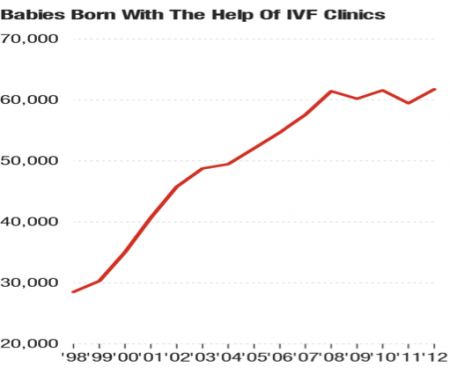
Over the past decade, the number of IVF procedures has skyrocketed from 113,000 in 2003 to more than 165,000 today. This trend is facilitated by decreasing costs of IVF procedures and increased successful uterine implants. In the last 10 years, IVF costs have fallen from $20,000 to approximately $10,000 per procedure while successful pregnancy rates have increased from 20% to greater than 50%. For 6.1 million women in the United States suffering from infertility issues this technology means a chance to have a baby where none existed before. And in 17,000 cases in 2015, women have used a donor egg to become pregnant.
IVF also gives couples the ability to fertilize up to 8 to 10 eggs at a time. These can be grown to a blastocyst (the first stage of development that occurs to an egg after fertilization when it begins differentiating into a multicellular organism). The healthiest blastocyst can then be selected for implantation into the mother’s womb. I believe that IVF may eventually be the “standard” and most widely accepted way to reproduce in the not too distant future.
Egg Freezing
As women continue to further their education and careers, many face deep anxiety about having children later in life since fertility rates decline by two-thirds by age 40.
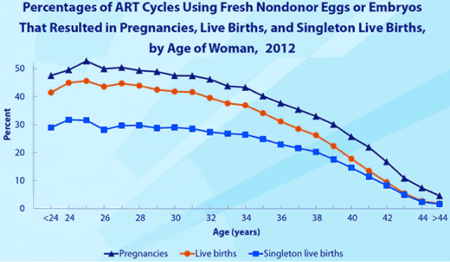
The new solution to this aging challenge is the ability to freeze healthy eggs harvested from earlier in life. Egg freezing is becoming a way for women to reproduce to a timeline of their own choosing, not one dictated by a biological clock. Between 2009 and 2013, as depicted in the graph below, the number of women choosing to freeze their eggs at fertility clinics in the United States grew 700%.
Carl Djerassi, inventor of the contraceptive pill, commented on this trend, saying, “In the next 20 years, more young people will freeze their eggs and [sperm] in their 20s, and bank them for later use. They will do away with the need for contraception by being sterilized, and withdraw their eggs and sperm from the bank when they are ready to have a child via IVF.”
Designer Babies
If you had the ability to tinker with the genetics of your baby, would you? What if you could prevent a hereditary disease? Might it become “unethical” to NOT correct genetic errors? Since we discovered CRISPR/Cas9, a tool used to “edit” the human genome with incredible precision, these questions are no longer theoretical and philosophical. Just three years after its initial development, CRISPR is already widely used by biologists as a search-and-replace tool to alter DNA. And by editing the DNA of cells or an embryo (germline engineering), it becomes possible to correct diseased genes and pass genetic fixes on to future generations. Such a technology could be used to rid families of genetically transmitted diseases such as cystic fibrosis and muscular dystrophy. This could be as important to the 21st century as vaccines were to the 20th.
By some measures, U.S. public opinion is not particularly negative toward the idea of genetically modifying babies.
The Pew Research survey results depicted above found that 46% of adult Americans approved of genetic modification of babies to reduce the risk of serious diseases. The same survey also found that 83% felt genetic modification to make a baby smarter would be “taking medical advances too far.”
At least three other centers in the United States are working on germline engineering. They are joined by scientists in China, and the United Kingdom. Recently a biotechnology company, OvaScience, in Cambridge, Massachusetts, raised over $132 million to advance research into producing children free of specific genes from inheritable diseases.
Correcting the DNA in a woman’s egg, or a man’s sperm, could be used in IVF clinics to produce embryos free of genetic-caused diseases. We may even see direct editing of DNA in an early-stage IVF embryo.
Life as we know it is becoming programmable.
Reproduction and Exponential Technology
Exponential technologies over the next two decades will play a role in the way we decide to bring life into this world. There are three new technologies specifically that may be the future of reproduction:
- Making Babies With More Than Two People: This April, the world’s first baby was born from a new procedure that combined the DNA of three people. Nuclear DNA came from a mother and a father, and mitochondrial DNA transferred into the fertilized egg came from a third donor.
- Making Babies Without Eggs: Scientists at University of Bath are conducting experiments that suggest it may be possible to create babies without eggs. Their research has succeeded in creating healthy baby mice by tricking sperm into believing they were fertilizing normal eggs. In such a scenario, two men could have a child, with one donating an ordinary cell and the other donating sperm. Or one man could have his own child using his own cells and sperm with that child being more like a non-identical twin than a clone.
- Artificial Wombs: In the mid-1990s, Japanese investigators succeeded in maintaining goat fetuses for weeks in a machine containing artificial amniotic fluid. Today, it is possible for a preterm fetus to survive when removed from the mother at a gestational age of slightly less than 22 weeks. That’s only a little more than halfway through the pregnancy (normally 40 weeks). For moms reading this blog, imagine not having to carry a baby around for nine months at a time.
Implications
We are moving from evolution by natural selection to evolution by intelligent direction at an accelerating pace. Some may even say from Darwin to intelligent design. From the advent of birth control in the 1960s, to CRISPR/Cas9 today, we humans are increasingly capalbe of controlling how and when we reproduce. Technologies like CRISPR/Cas9 cut to the core of what makes us who we are. And it makes us ask whether humans should be exercising that kind of power, especially with features like eye and hair color, height, intelligence, and athletic ability.
These are moral and ethical issues that technology is making us question, forever changing human development and procreation.
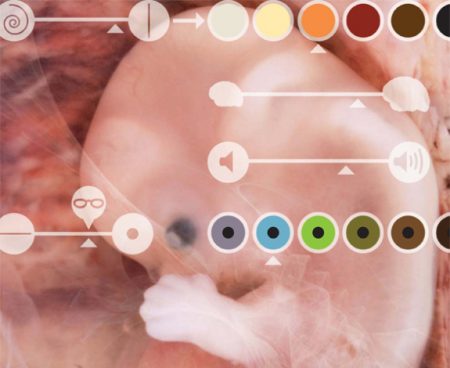

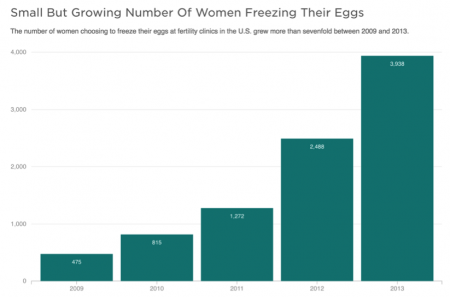
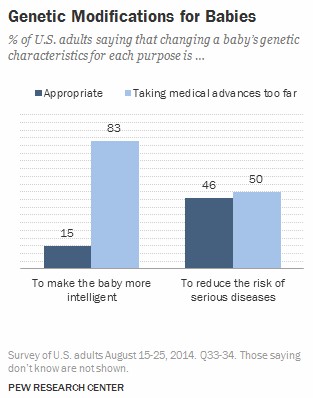

















[…] Imagine A Future of Reproduction Without Sex – For 6.1 million women in the United States suffering from infertility issues this technology means a chance to have a baby where none existed before … first stage of development that occurs to … […]
[…] Imagine A Future of Reproduction Without Sex – In the last 10 years, IVF costs have fallen from $20,000 to approximately $10,000 per procedure while successful pregnancy rates have increased from 20% to greater than 50%. For 6.1 … […]